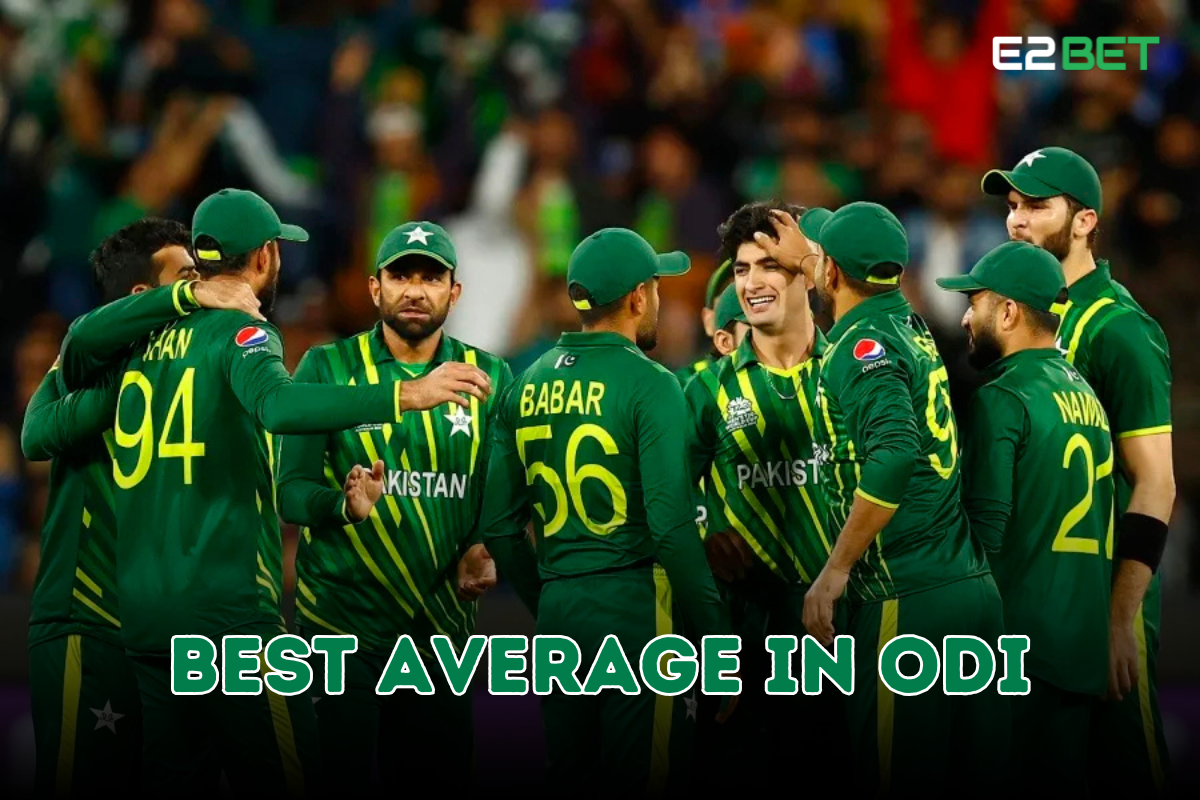The batting average is its holy grail if cricket is a game of numbers. It’s a statistic that reflects a player’s consistency and impact over time. In ODI cricket, where overs limit matches but not excitement, having a great batting average can set a player apart. So, what makes the “best average” such an intriguing topic? Let’s dive in to find out.
Understanding Batting Average in ODI
Before we jump into the legends with the best averages, let’s break it down. A batting average is calculated by dividing the total runs scored by the number of times a player gets out. Sounds simple, right? But there’s so much more to it.
Factors Influencing Batting Averages
- Not-Outs: Players who frequently finish innings unbeaten often boast higher averages.
- Match Conditions: Flat pitches can make scoring runs easier, while seaming tracks can dent a batter’s numbers.
- Opposition Quality: Facing a world-class bowling attack is a tougher test than playing against weaker teams.

Top Players with the Best Batting Averages in ODI History
Virat Kohli: The Modern Consistency King
Virat Kohli has set a benchmark for consistency. With an ODI average hovering above 57, Kohli’s ability to chase targets under pressure is legendary. His technique and hunger for runs make him a standout performer.
Michael Bevan: The Original Finisher
Long before MS Dhoni, Michael Bevan mastered the art of finishing games. His average of over 53 speaks volumes about his ability to rescue Australia in tricky situations.
AB de Villiers: Mr. 360°
AB’s career perfectly blended audacious stroke play and rock-solid consistency. An average of 53, paired with a strike rate of over 100, shows why de Villiers is regarded as one of the best ODI batsmen.
Babar Azam: The Pakistani Maestro
Babar Azam is already breaking records at a young age. With an average exceeding 58, he’s proving to be Pakistan’s backbone in every chase and innings-building effort.
MS Dhoni: The Iceman
MS Dhoni’s calm demeanor under pressure allowed him to maintain an average above 50. His ability to chase down steep targets while staying unbeaten earned him legendary status.
How Batting Averages Reflect Player Performance
Averages vs. Strike Rates: Which Matters More?
While averages highlight consistency, strike rates reflect the scoring speed. The best players balance both, ensuring they contribute effectively in all scenarios.
Best Averages in Specific Eras of ODI Cricket
- The 1970s-80s: Focused on defense and patience.
- 1990s-2000s: Saw aggressive players like Ricky Ponting and Sachin Tendulkar pushing boundaries.
- Modern Era: The focus shifted to balancing consistency with quick scoring, thanks to T20’s influence.
Challenges in Maintaining a High Average
Even the best players face hurdles. Injuries, poor form, and changing roles in the team can all impact a player’s ability to maintain a high average.
Strategies to Achieve a High Batting Average
- Mastering Technique: Players need to dominate bowlers without taking undue risks.
- Mental Strength: Handling pressure in close chases or tricky situations is vital.
Conclusion
Batting averages are more than mere statistics; they reflect a player’s consistency and resilience in the high-pressure world of ODI cricket, where every run counts and legends with the best averages have etched their names in history. As emerging players aim for greatness, the pursuit of the perfect average persists, with platforms like e2bet Pakistan offering insights into the latest trends in the game.
FAQs
Q1. Who holds the best batting average in ODI history?
Ans: Ryan ten Doeschate holds the highest career average in ODIs at 67.00.
Q2. How is the batting average calculated in cricket?
Ans: The total runs scored divided by the number of times a player is out.
Q3. Why do some players have higher averages in ODIs than in Tests?
Ans: ODI players often face limited-over scenarios, where not-outs are common.
Q4. Which active player is likely to achieve the best average in ODIs?
Ans: Babar Azam is a strong contender, given his current form and consistency.
Q5. Does a higher average always mean a better player?
Ans: Not necessarily. Averages reflect consistency but must be paired with impactful performances.